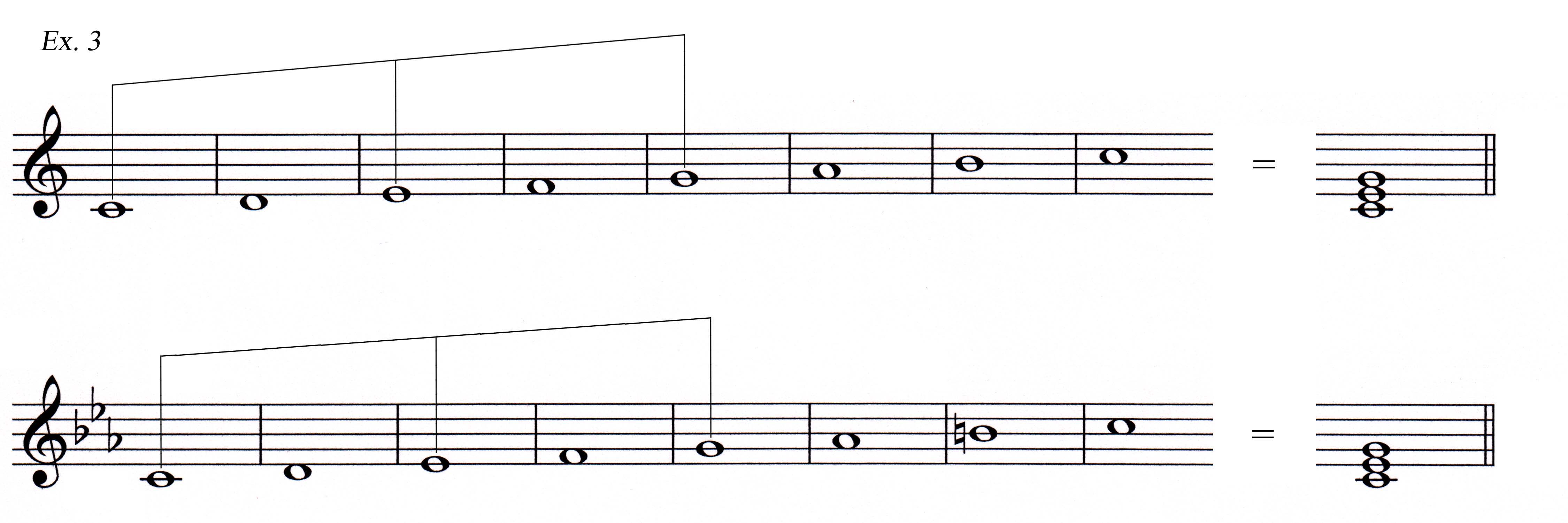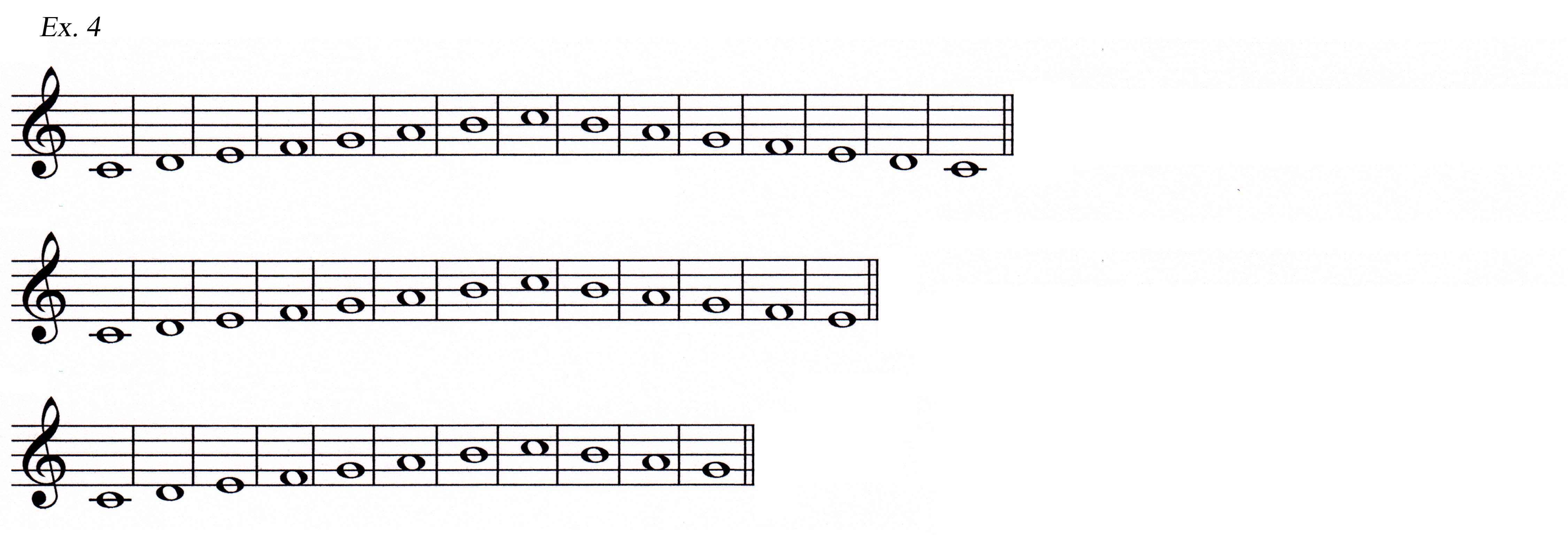
If you’ve been listening
carefully to the material from the beginning of this series, you should now be
able to hear the difference between a simple major triad and a minor one. So
far, the “common” major and minor chords we’ve discussed have been in what is
called root position – that is, with
the root as the lowest note. However, chords can be inverted, just as intervals
can be inverted, and like all musical material, inversions play critical roles
in everything, all musical expressions, from classical works by Mozart and
Villa-Lobos to the chord-melody approach of Jazz masters like Joe Pass and rock
songs that include “Stairway To Heaven” by Led Zeppelin.
The inversion process is pretty much the same with chords as it is with
intervals, in that you raise the lowest note by an octave. Since a triad has
three notes, you can do this twice (the third time you raise the lowest note an
octave, you get the same chord you began with, but an octave higher). When you
raise the root an octave, you produce the first
inversion, which has the 3rd in the bass (lowest note), and when
you raise the 3rd up an octave, you get the second inversion with the 5th in the bass (lowest note).
Bear in mind that an interval changes its type when inverted. For instance, a
third becomes a sixth, but a chord remains the same – a major stays a major and
a minor stays a minor. However, its position
is changed. Ex. 1 shows the process
with a C triad.

Again, in the first inversion, it is the 3rd
of the chord that is at the bottom of the heap; in the second inversion, it is
the 5th. Like any structure, chords sit on foundations, and the bass
note plays a very important part. Ex. 2
illustrates the last few notes of “Three Blind Mice”: in Ex. 2a, the last chord is in root position; in Ex. 2b, it’s in first inversion, and in Ex. 2c, it’s in the second inversion. Play the three examples and
listen to the effect.

Ex. 2a sounds absolutely final
and satisfactory. Ex. 2b sounds okay, but not quite as final as Ex. 2a. Ex. 2c
could not possibly satisfy a musical ear as a way of ending a piece. It sounds
like it needs something else to follow it. So we can say that the root position
is entirely stable, the first inversion is mildly unstable, and the second
inversion is entirely unstable. In fact, the root position is what we always
aim to have at the end, though a first inversion may occasionally be
acceptable.
As was mentioned in the previous
installment, another frequently used way of deriving the common chords is to
stack the root, 3rd, and 5th degrees of the major and
harmonic minor scales, respectively, as in Ex.
3.

You now have three ways of
looking at how major and minor triads are constructed: a subdivided perfect
fifth, a major and minor third piled together, and the stacked 1st,
3rd, and 5th of the appropriate scale. When you derive
the common chords from scales, you can say that they are tonic major or minor triads,
because you’re using the root of the scale for the chord’s root.
The root position sits on the
tonic of the scale, which is a very stable and final note (think how many tunes
finish on the tonic). The first inversion sits on the median (3rd
note) of the scale, and is less final, but not too uncomfortable. The second inversion rides uneasily on the
dominant (5th note), which always wants to move somewhere else,
which tends to point toward the tonic (root).
Play the scale in Ex. 4, which shows the C major scale
ending on the root, then the 3rd, then the 5th. The most
important parts of any chord are the bottom and top notes. The bottom note
determines the final effect with regard to stability and harmonic direction,
and the last usually forms part of the melody. Just as when you see a clear
stream, you’re most aware of the surface and the river bed.

Ex. 5 gives a
number of major and minor triads in their first and second inversions. Identify
which is which – before you look at the answers! There are also three voicings
that aren’t common chords at all.

Now, seriously, don't look at the answers until you think you have this right. Write down
your answers before looking below. This is the only way you will honestly know if you
are beginning to understand this stuff. And if you are striving for understanding, whyever
would you cheat?
* * * * * * *
Answers:(I = first inversion; II = second inversion; a chord symbol
with letter only refers to a major chord, while a m designates a minor chord):
(a) Eb/I,
(b) A/II, (c) Bm/I, (d) Cm/II, (f) F/I, (g) F#m/I, (h) Fm/II,
(i) E/I, (j) Ebm/I, (k) Db/I,
(l) A/I, (n) D/II (o) G#m/II,
(p) Ab/II, (q) Em/II, (r) Bbm/I, (s) Bb/II,
(u) C#m/II, (v) G/II, (w) Bbm/I, (x) C#/I,
(y) Gm/II, (z) B/II. The decoys – neither major nor minor triads – are (e), (m),
and (t).